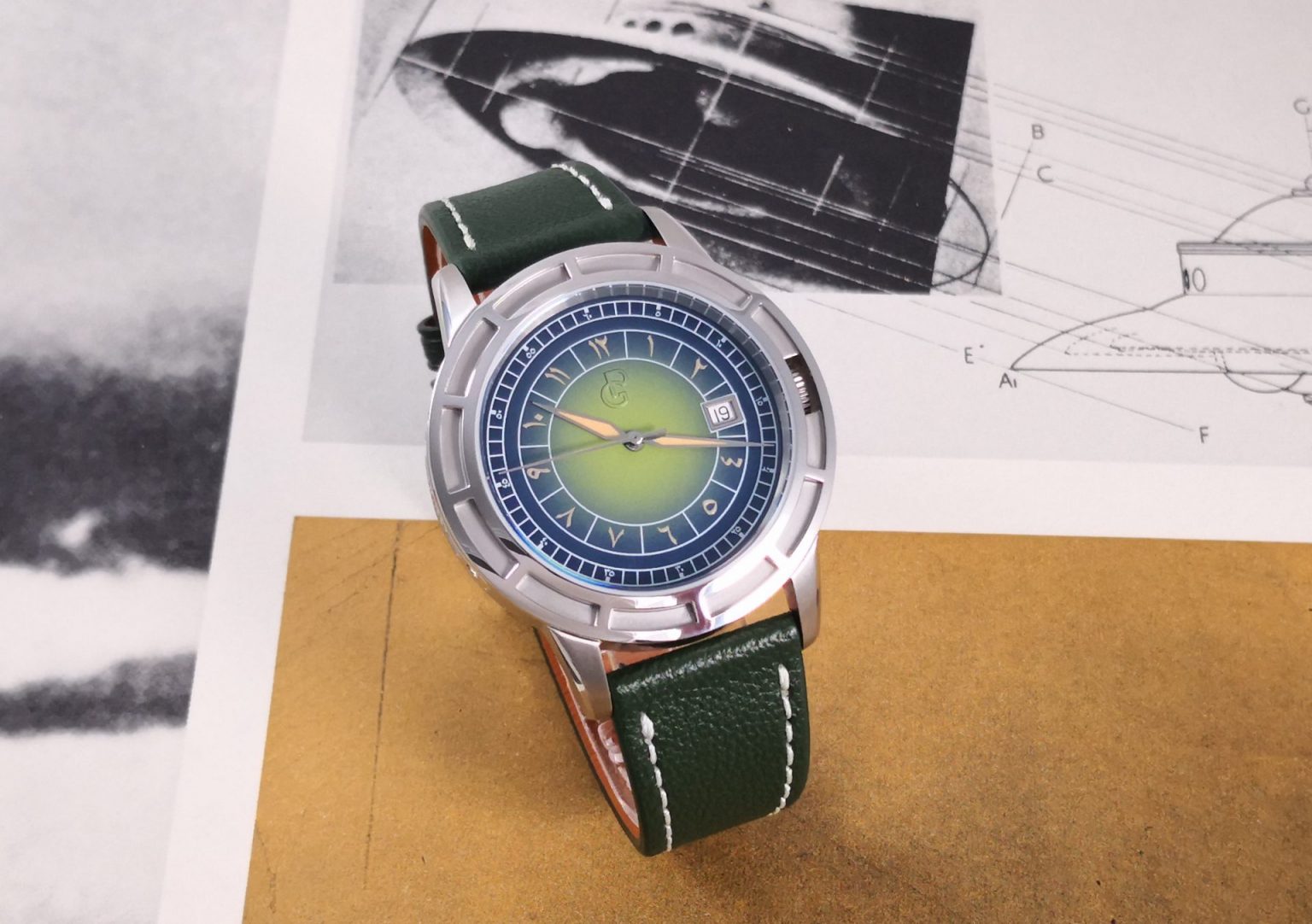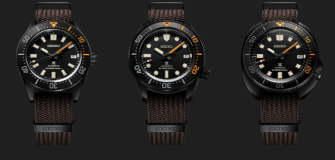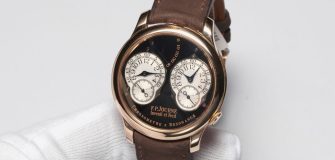10 Highlights in the History of the Dive Watch
Share
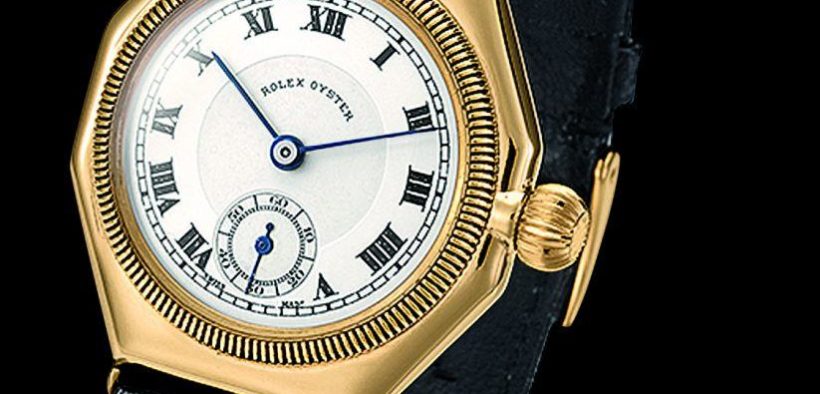
In the beginning, dive watches were pure tools: essential swimming buddies that helped keep divers on time and hence, well, alive. Today they’re something else: fashion statements, conversation pieces, rugged companions for a trip to the beach or pool. This is an excerpt from Timeline: “Dive Watches Through the Decades,” which traces the history of the dive watch from its start in the 1920s, with the invention of the first truly water-resistant cases, to 2014. (Only mechanical watches are included.)
1. Rolex Oyster (1926)
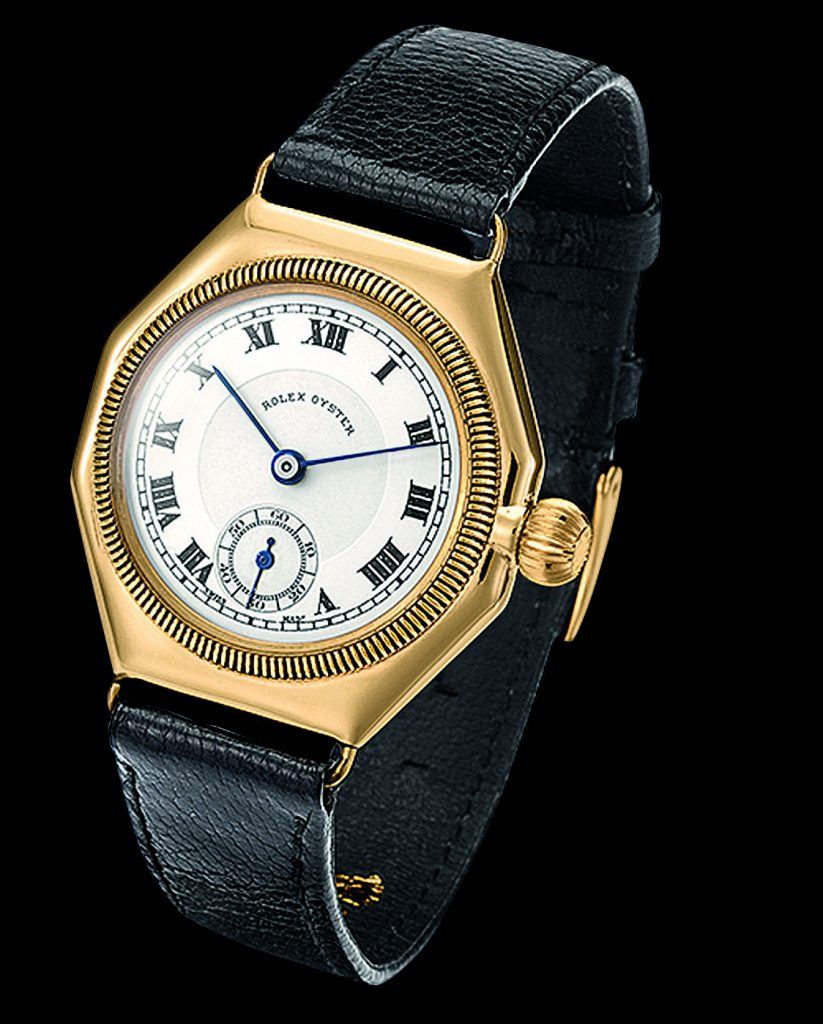
In 1926, watches constructed especially for use by divers appear. They have insulated crowns (the crown is the chief point of entry for water into a watch case). It was also the year that Rolex founder Hans Wilsdorf introduces the Oyster case, which has a screwed crown, screwed caseback, and securely sealing crystal. It is the world’s first truly water-resistant case. One year later, Wilsdorf asks Mercedes Gleitze, a stenographer vying to become the first British woman to swim the English Channel, to wear an Oyster on one of her attempts. She doesn’t make it all the way, but the Rolex she wears around her neck keeps on ticking.
2. Panerai prototypes (1936)
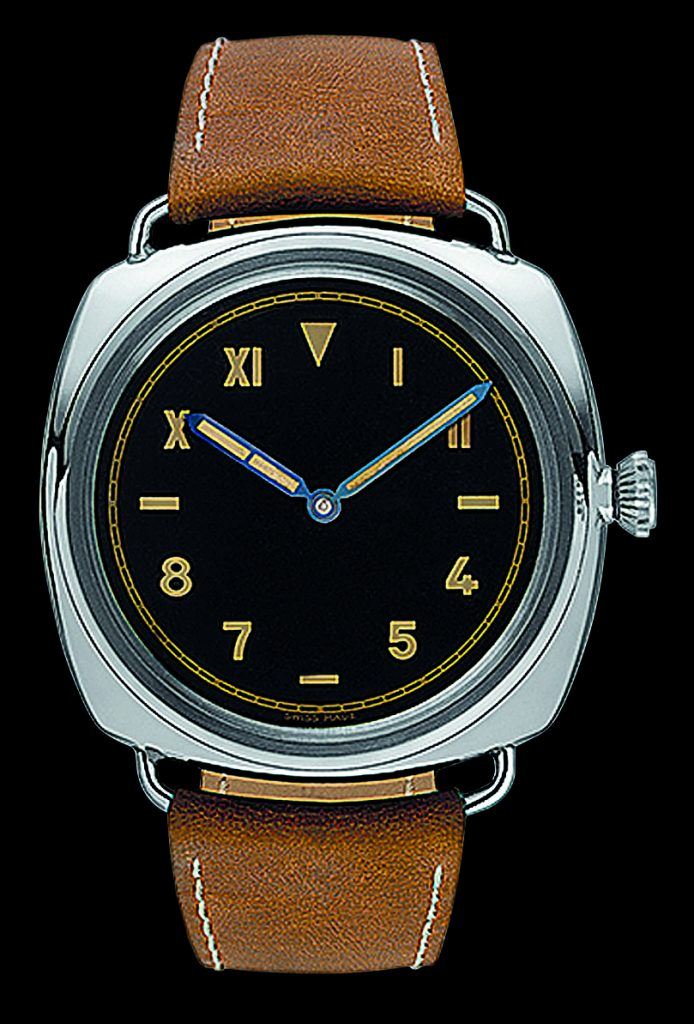
The Italian Navy commissions Panerai to develop the first prototypes of a watch that will evolve into the model now known as the “Radiomir.” The watches, water resistant to 30 meters, go into production two years later. The early Radiomir watches have movements and proprietary cases – cushion shaped and 47 mm in diameter − made by Rolex. They are named for the radium that makes their dials legible even in murky water.
3. Blancpain Fifty Fathoms (1953)
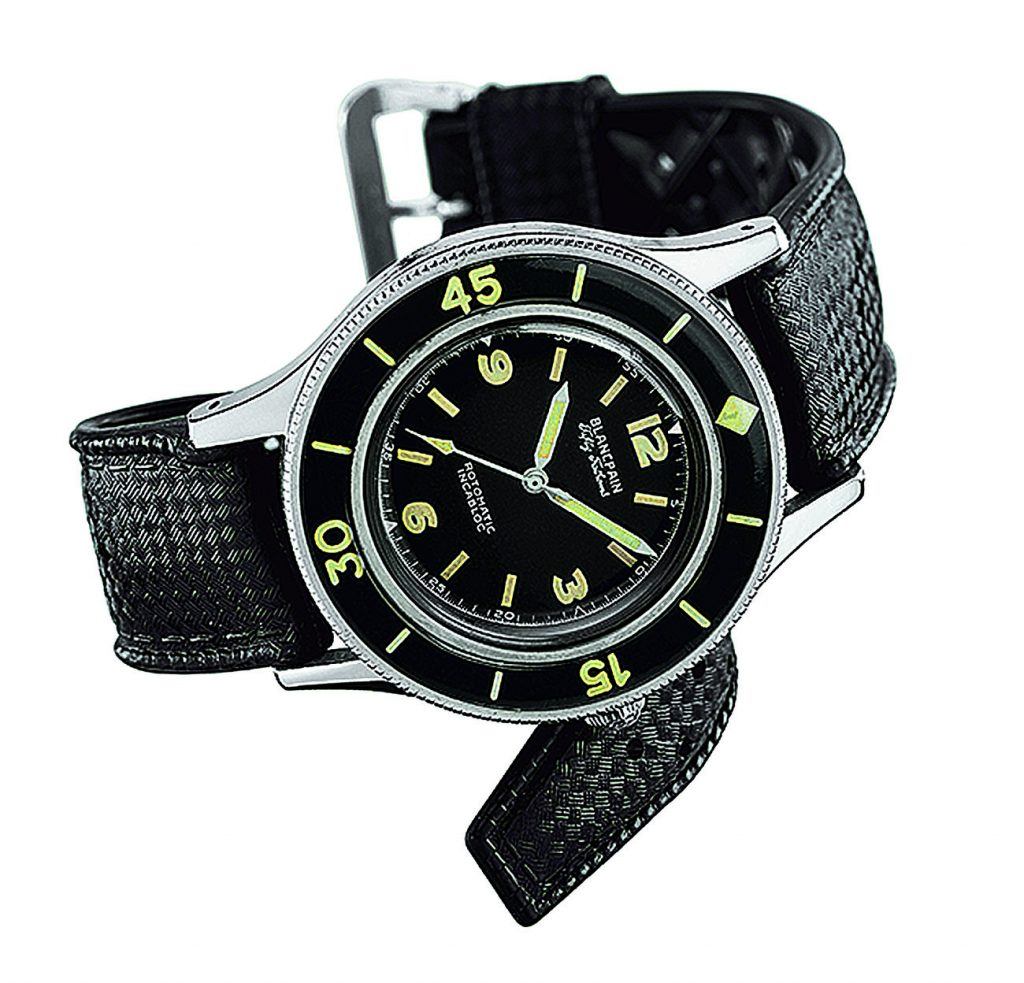
Blancpain presents its first dive watch, the Fifty Fathoms. The watch is water resistant to 100 meters. (Fifty fathoms is equal to 300 feet, or about 91 meters. It is the maximum depth divers can go at the time with the equipment then available.) The watch is the result of a request by Captain Bob Maloubier, who was a secret agent for the British during WWII and then became leader of the French military’s combat diving corps. He asked Blancpain to make a watch with a black dial, large Arabic numerals, clear indications and a rotating bezel. “We wanted in effect that each of the markers be as clear as a guiding star for a shepherd,” Maloubier later recalled.
4. Panerai crown protection (1956)
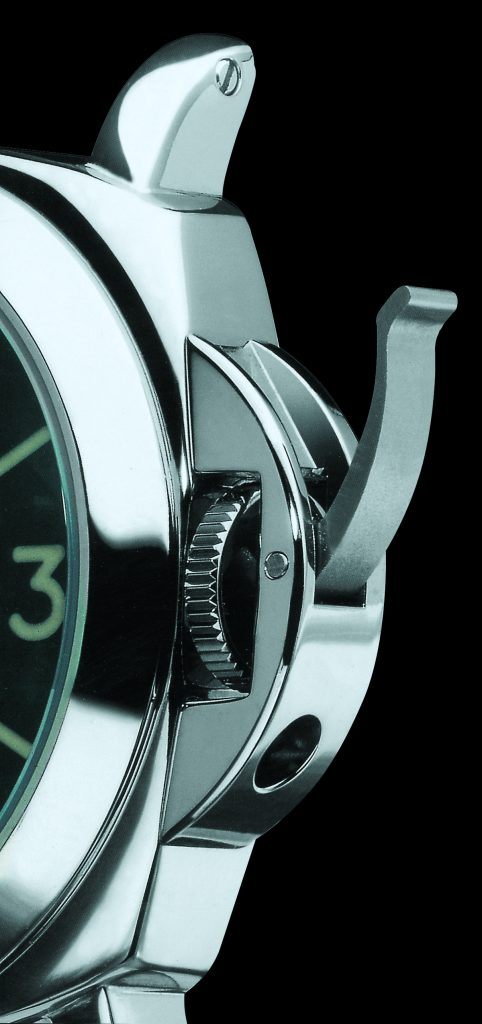
Panerai receives a patent for a curved, crown-protecting bridge. Now a hallmark of the company’s Luminor collection, the bridge contains a locking cam lever that pushes the crown against the case so that it fits tightly against the crown’s seals.
5. Breitling’s first dive watch (1957)
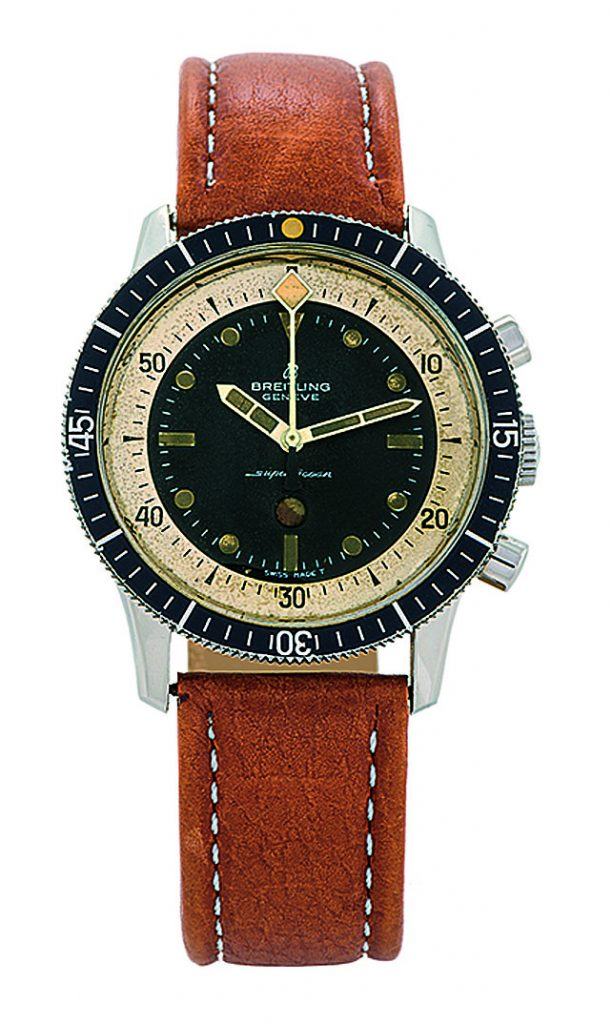
Breitling launches its first dive watch, the Superocean. The watch is water resistant to 200 meters, thanks in part to its monocoque (i.e., one-piece) case and its especially sturdy crystal. The watch’s bezel can be locked in place so that it won’t be knocked off position during a dive. A chronograph version of the watch comes out in 1959.
6. First Rolex Sea-Dweller (1967)
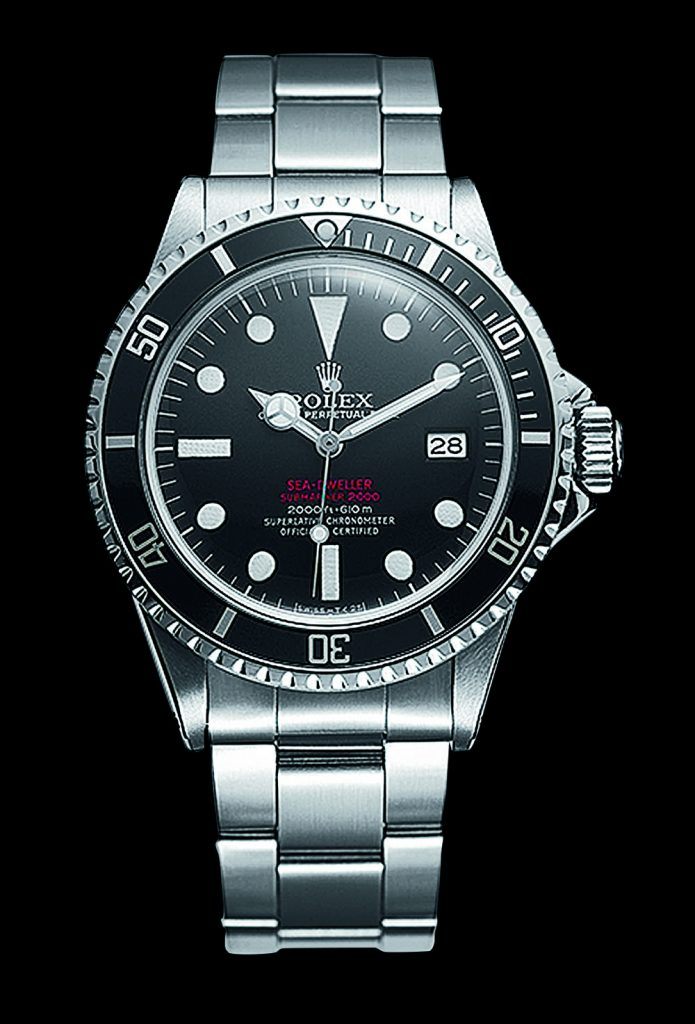
Rolex introduces the Sea-Dweller, a deeper-diving version of the Submariner. Its distinguishing feature is its helium valve, through which helium that has entered the watch case during time spent in a diving chamber can be released. The watch is produced at the request of the French company COMEX (Compagnie Maritime d’Expertise), which specializes in deep-diving equipment and services, chiefly for offshore oil and gas extraction. The watch is water-resistant to 610 meters.
7. First dive computer (1983)
The first dive computer is introduced. In the 1990s, the use of dive computers becomes widespread, and dive watches are relegated chiefly to the role of back-up equipment.
8. ISO invents dive watch standard (1996)
The International Organization for Standardization (ISO) issues standard 6425, defining the features that a watch must have in order for it to be designated a “dive” watch. They include requirements for water resistance (the watch must be 25 percent more water-resistant than claimed on the dial), legibility under water, resistance to thermal shocks and ability to measure elapsed time. Standard 6425 supplants the standard issued in 1984 and is still in effect today.
9. CX Swiss Military 20,000 Feet (2009)
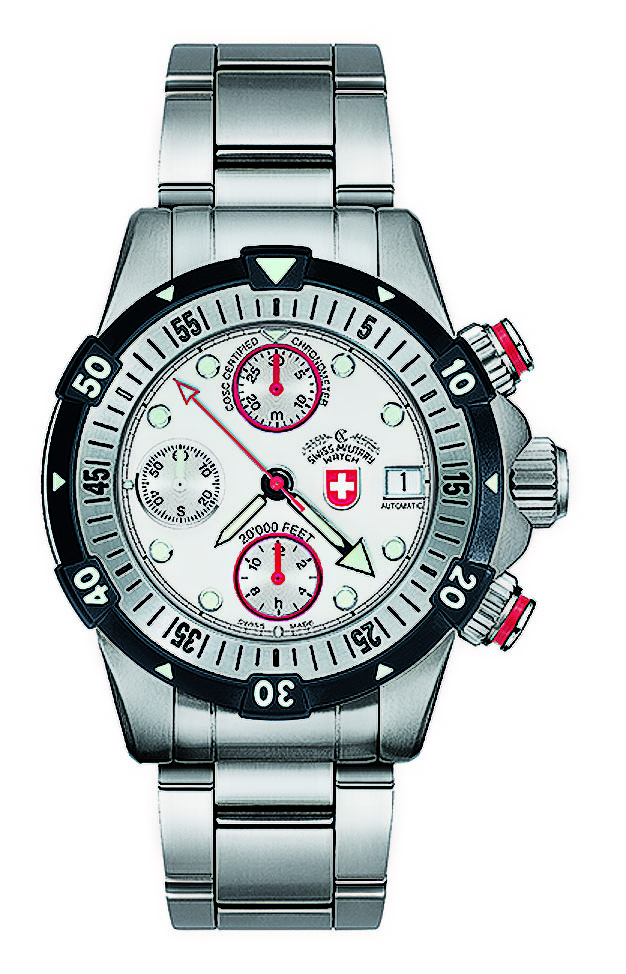
CX Swiss Military unveils the 20,000 Feet, which breaks the Rolex Deepsea’s record for water resistance (20,000 feet is equal to about 6,100 meters) and enters the Guinness Book of Records. (CX Swiss Military had held the deepness record from 2005 until the Deepsea appeared in 2008.) The watch is a chronograph with a 28.5-mm-thick case and a domed back. According to CX Swiss Military, it is actually water-resistant to 7,500 meters, thus providing the 25-percent margin of safety required to meet ISO 6425.
10. IWC Aquatimer collection (2014)
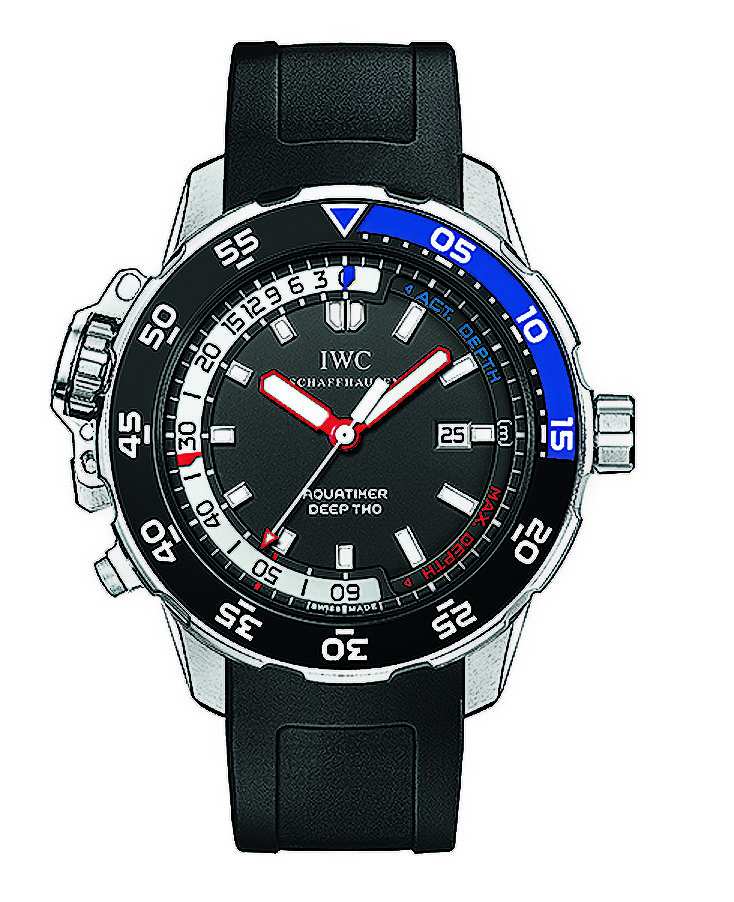
IWC updates its Aquatimer collection, fitting it with an outer, bidirectional bezel and an inner, unidirectional one. The most impermeable of the new Aquatimer models, the Aquatimer Automatic 2000, is water resistant to 2,000 meters.
Discover the complete history of the dive watch in our download — available in the WatchTime Shop — which includes even more highlights and firsts, like the Rolex Sea-Dweller 4000 and the first Omega Seamaster!
Merken
Merken
Merken









